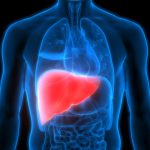
On an average day, 750,000 people trek through Grand Central Station in New York City. This hub gathers commuters from 67 different train tracks and routes them to their destination.
The human body has a similar hub, but one that comes in a smaller package. Weighing in at 3.5 pounds, the liver collects everything a person eats and drinks, and repackages it for his or her body to use or eliminate — the body’s personal Grand Central Station.
The problem is, not all livers can handle the body’s constant traffic, and each year 1,400 people die waiting for a life-saving liver on the transplant waiting list.
UPMC’s Living-Donor Liver Transplant program is making strides to combat those numbers by allowing donors to give a portion of their healthy liver to a recipient, freeing them from the race against the clock. As part of one of the busiest programs in the country, UPMC surgeons perform 20 to 25 living-donor transplants each year.
“We have one of the most recognized programs in the country, both for adult and pediatric patients, and have been performing this procedure routinely for the last 15 years,” said Abhinav Humar, M.D., chief of transplantation, UPMC, and clinical leader of the Living-Donor Liver Transplant program.
—
Jennifer Steel is UPMC’s living-donor advocate. In simple terms, her job is to help donors recognize the personal risks of donation, make sure they don’t feel pressured to donate, and remain a neutral part of the care team throughout the transplant process.
There were few guidelines established for advocates when they became a requirement for transplant programs in 2007, and Steel took the reins. Her team has conducted research on advocate qualifications, training and continuing education to establish best practices for advocates across the country.
When someone wants to become a living donor at UPMC, they take part in an initial phone screening before meeting with Steel, who assesses their situation:
- Why did they come forward to donate?
- How long have they known the recipient?
- Have they ever had any problems with surgeries?
- Do they have a history of depression or anxiety?
Those are a few of the many questions she uses to compile a report that identifies any psychosocial, medical and financial risks to the donor. She later approves or declines the potential donor at a selection committee meeting.
“I have to choose whether to protect the person [from possible risks] or advocate for their wishes,” Steel said. “Sometimes balancing that is difficult, but I usually try to fall in line with what the donor wants. I’m here to support them in their decision, and help them make an informed choice after I express my concerns.”
In the final stretch of the meeting, she prepares the donors for the rest of their evaluation process, which include meetings with hepatologists, surgeons, social workers, nurses, nutritionists, ethicists, and anyone else on their care team.
“It’s emotional, even for me, to see people making these selfless choices and undergoing the risk of surgery to help somebody else,” Steel said. “It’s rewarding to see people who love and care so much about others.”
—
 The Living-Donor Liver Transplant program at UPMC has played an integral part in sharing knowledge and data with other programs nationwide.
The Living-Donor Liver Transplant program at UPMC has played an integral part in sharing knowledge and data with other programs nationwide.
“We’ve been involved in consortiums with other medical centers that are doing the same kinds of surgeries so we can better understand the risk to donors, as well as find ways to increase their safety,” Dr. Humar explained. “Each center has only a few living donors every year, so it helps to have a forum where we can bring all our information together.”
UPMC’s high-volume program translates to increased skills in our surgeons and high success rates. The program not only eliminates a wait for patients, but also offers them the added benefit of receiving a transplant before their liver disease progresses to a severe state, improving long-term outcomes.
“Patients who receive transplants in the standard way — from deceased donors — have to wait until they’re at the top of the waitlist,” Dr. Humar said. “Essentially, that means being the sickest in the group. The best time for transplantation is when patients are in a relatively healthy state where their bodies are able to tolerate a major surgical procedure.”
And for the donor, the liver is the only organ with the ability to regenerate itself. So while the part of the liver that was removed will not grow back, what is left of their liver will grow to its original size.
“I think very few people are aware that you can donate part of your liver, but it has an amazing ripple effect,” Steel said. “If someone helps a loved one by donating part of his or her liver, it also helps a stranger because another person is off the waitlist and a deceased donor’s liver is now available,” said Steel.
For more information about the Living-Donor Liver Transplant program, click here. For more information about organ donation or to register as a donor, click here.







